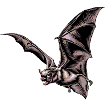Museum, University of Nebraska State

University of Nebraska State Museum: Mammalogy Papers
Document Type
Article
Date of this Version
3-31-1981
Citation
Fieldiana Zoology, New series (1981) No. 7.
Published by the Field Museum of Natural History, publication 1316.
Abstract
The purpose of my study is to examine as many species of the family Molossidae as possible and to determine, with the aid of numerical methods, what natural groups exist within the family. Sneath & Sokal (1973) discuss the methods and reasons for this kind of analysis. A natural group of organisms as here defined is one in which its members share a close phenetic relationship. Phenetic relationship is defined as "similarity (resemblance) based on a set of phenotypic characteristics of the objects or organisms under study," (Sneath & Sokal, 1973, p. 29), and is distinct in definition from phylogenetic relationship. However, I have used phenetic relationships to help estimate phylogenetic ones. I think that the estimation of the evolutionary relationships from phenetics is best observed when size of the organism is not a factor, and for this reason, I place much emphasis on the shape analyses in my study (for a discussion, see Sneath & Sokal, 1973, pp. 168-178). Analysis with size included can be very important in the estimation of ecological relationships.
A natural group of bats in the family Molossidae includes individuals of a certain shape category and can be distinguished from individuals of a different shape category. I think each shape category or group indicates a certain way of life. Often, these natural shape groups correspond with classical genera or subgenera and are described in terms of those taxonomic names. Here, I examine the family Molossidae phenetically, determine how many natural shape groups have evolved within it, predict the resulting diverse ways of life, and estimate the evolutionary relationships among the species and groups. A few of the characters can be graded as to their primitive-derived nature and accompany the evolution discussion. The analyses used were designed not so much to distinguish one species from another, but to detect underlying morphological trends.
Document = viii + 173 pages. Includes 25 figures, 12 tables, summary of names, key to genera and subgenera, and bibliography.


Comments
Copyright 1981, P. Freeman. Used by permission.